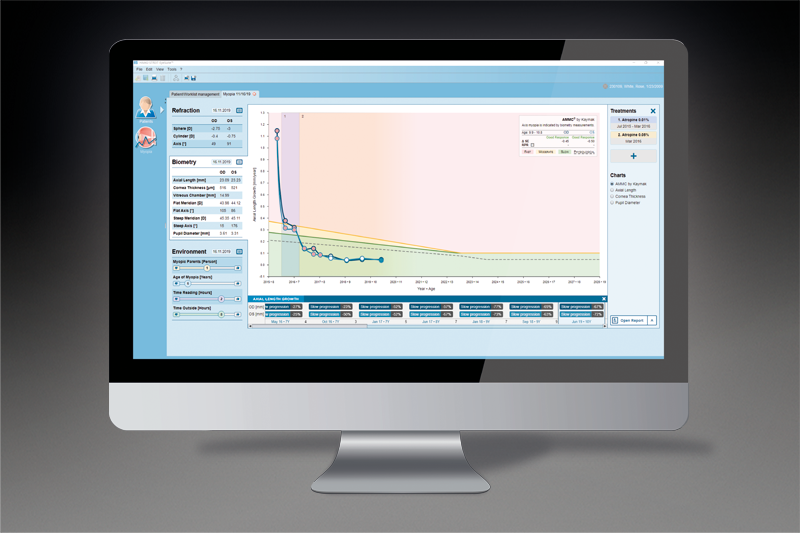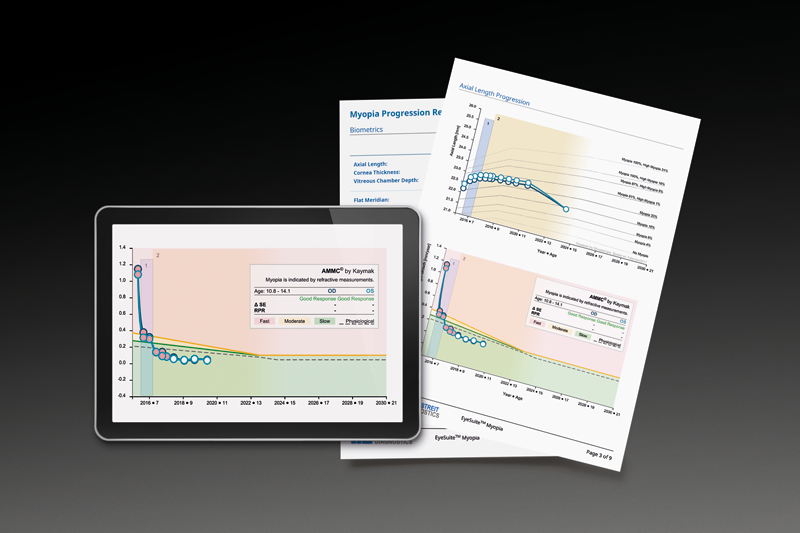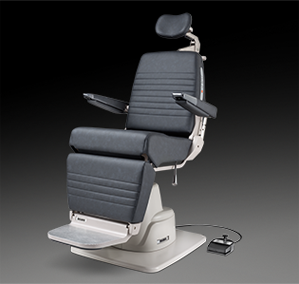Lenstar Myopia is a comprehensive solution for myopia management; it enables the eye care professional to: Obtain fast, precise measurements and quickly and confidently interpret data to detect myopia.
Haag-Streit LENSTAR Myopia
Description
State-of-the-art myopia management & patient education
Lenstar Myopia is a comprehensive solution for myopia management; it enables the eye care professional to:
- Obtain fast, precise measurements and quickly and confidently interpret data to detect myopia
- Utilize this wealth of data to make an accurate diagnosis to confidently predict myopia’s onset and progression
- Clearly communicate easy-to-understand information to facilitate true patient/parent education, allowing them to actively participate in the myopia management process
- Decide on a form of treatment, monitor its progress, adjust where necessary, and control myopia progression
The solution
Launched in 2020, Lenstar Myopia is a comprehensive solution based on the established Lenstar 900 optical biometer combined with powerful EyeSuite Myopia software. Boasting the new, exclusive Age-Matched Myopia Control (AMMC®) framework, it enables quick and accurate measurements and interpretation of data. This allows the eye care professional to detect myopia, diagnose and monitor its progression, and decide on appropriate treatments.
Proven technology
Lenstar Myopia adopts the Lenstar 900’s proven Automated Positioning System (APS) technology. Fast and accurate measurements with a single click of the joystick save time, increase patient and user comfort, and are especially beneficial when measuring children’s eyes.
This feature is combined with Lenstar’s superior measurement technology, which provides precise axial length measurement, pupillometry, vitreous chamber depth, central corneal thickness, and keratometry to enable accurate predictions about the onset and progression of myopia.
Developed in collaboration with leading experts
EyeSuite Myopia is a compact, highly-customizable, easy-to-use, yet comprehensive myopia management software platform. It was developed in collaboration with leading myopia experts such as Dr. Thomas Aller (Optometrist, University Berkley), Pascal Blaser (founder of «myopia.careTM»), and Prof. Dr. Hakan Kaymak (Ophthalmologist, University Eye Hospital Homburg/Saar).
It is based on the latest findings of myopia research into refractive progression trends, axial length growth, and environmental factors. All progression trends can be adapted for regional peculiarities and supplemented with new control rates as they become available.
MYOPIA MANAGEMENT – DETECTIONA powerful tool for myopia detection
Early myopia detection is crucial for better treatment response, as more conservative therapies may be more effective. Implementing a comprehensive screening program for children can help in this regard.
The Lenstar Myopia is a particularly powerful tool for myopia detection due to its high-precision biometric data and fast measurement process. Eye care professionals can use this technology to identify onsetting myopia cases that would otherwise go undetected.
MYOPIA MANAGEMENT – DIAGNOSISA comprehensive diagnosis toolkit
The Lenstar Myopia boasts a comprehensive toolkit, now with the new Age-Matched Myopia Control (AMMC®) framework of Prof. Dr. Hakan Kaymak. This complements established methods, providing diagnostic support based on the eye’s axial growth.
New AMMC framework
The new AMMC® framework provides excellent data on the eye’s expected length growth considering age, gender, and sociocultural environment. The eye care professional can compare axial length growth speed to a broad demographic database.
Pathologically fast eye growth can be rapidly identified using an easy-to-understand traffic light system.
Furthermore, AMMC® allows the eye care professional to observe and assess axial length growth over time and overlay potential treatments. This makes it possible to understand therapy effectiveness rapidly, allowing the eye care professional to adjust the individual patient’s therapy, as required, continuously.
Axial length – an established method
Diagnosis can also be built on well-established methods, such as comparing axial length to axial length reference curves.
EyeSuite Myopia uses the latest axial length growth curves from myopia experts at the Erasmus University Medical Center.
Lenstar Myopia provides powerful visualization, overlaying periodic axial length measurements with gold-standard normative studies (see Tideman et al.,2018 and Sanz Diez et al., 2019), and even adds custom reference curves.
Refraction – a vital tool
Refractive assessment remains a vital tool for myopia diagnosis. By determining refraction, and its development in childhood, predictions can be made about the progression of myopia until adult age. EyeSuite Myopia overlays this data with the predicted myopia course using various treatment methods based on their appropriate control rates.
Treatment options can be customized to match the eye care professionals’ experience and expanded to the newest insights from research.
MYOPIA MANAGEMENT – THERAPYTreat, monitor & optimize
Lenstar Myopia’s diagnosis toolkit is complemented with extensive data visualization capabilities. This enables the eye care professional to identify myopia in children quickly and provides a tool to assess the child’s health, decide on a form of treatment, monitor the chosen treatment’s progress, and adjust or optimize the treatment regimen, if necessary.
POWERFUL PATIENT & PARENT EDUCATIONEasy-to-understand myopia report
The Lenstar Myopia is the first myopia management solution in the market to truly facilitate patient and parent education. EyeSuite Myopia combines all collected data in a highly flexible and customizable report based on «myopia.care™».
The report provides parents with easy-to-understand information in familiar traffic light colors, enabling them to actively participate in the myopia management process and commit to and support the appropriate treatment for their child.
GLOBAL MYOPIA PANDEMICMyopia – a growing challenge
It is well-documented that the global myopia pandemic continues to progress rapidly. Most eye care professionals are familiar with the ‘Report of the Joint World Health Organization – Brien Holden Vision Institute Global Scientific Meeting,’ and the prediction that myopia will affect around 50% of the world’s population by 2050. Furthermore, one in ten myopic people will likely develop high myopia, which, if left untreated, can have drastic consequences in adulthood.





















